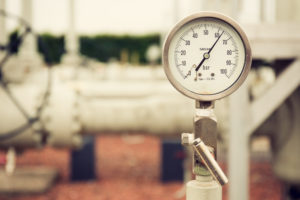What’s the Difference Between a Control Valve and an On-Off Valve? Here’s Everything You Need to Know
When you’re setting up a fluid control system, there are dozens of different types of valves you have to choose from. Each serves a specific purpose, but keeping them straight can get confusing. Many people have trouble with the difference between control valves and on-off valves.
Control valves and on-off valves serve different purposes depending on the degree of control you need for your system. Control valves are more precise, whereas on-off valves are more all-or-nothing. Read on to learn more about these two different valves and how they’re used.
Control Valves
As you might guess from the name, a control valve is used to control the flow of fluid in a system. They can maintain different variables at specific set-points, including density, concentration, flow rate, pressure, temperature, and liquid levels. A control valve includes a valve body, actuator, and positioner, as well as body assembly and trim parts.
The actuators on these valves can be pneumatic, hydraulic, or electrically powered, and they control how the valve opens and closes. The positioners monitor and control the actuator movements to maintain the desired set-point.

On-Off Valves
An on-off valve is a much less precise instrument than the control valve. It either allows for unimpeded flow or it shuts off flow completely. There are a couple of different styles of on-off valves, including ball, plug, butterfly, gate, and globe valves.
A ball valve consists of a ball with a channel cut through it that can be turned so the channel aligns with the rest of the line, allowing flow, or so that it doesn’t, shutting off flow. Butterfly valves have a flat piece of metal that rotates to open or close the channel. Gate valves and plug valves use conical pieces that slide down through the channel, sealing it securely shut.
Uses for Each
Control valves are used in situations where you need specific control over a piece of a system. These are excellent for jobs where precision is crucial and there are a number of factors that have to be tightly controlled.
Ball valves are good for more black-and-white situations. Because they’re all or nothing, they’re often used as emergency shutoff measures. You could even have a control valve and an on-off valve on the same system, with the on-off valve acting as a backup in case the control valve fails.
Discover How to Use Different Valves
On-off valves and control valves are similar in some senses, but the difference lies in their degrees of control. Where control valves can be very precise, on-off valves can do exactly what their name suggests: turn on or turn off. Each of the different valves has an important place in your system.
If you’d like to find the best valves for your system, check out the rest of our site at CPV Manufacturing. We have valves and fittings to suit every application, from shipbuilding and industrial gas uses to petrochemical and pharmaceutical systems. Check out our product selection guide and find the right valve for your needs.

